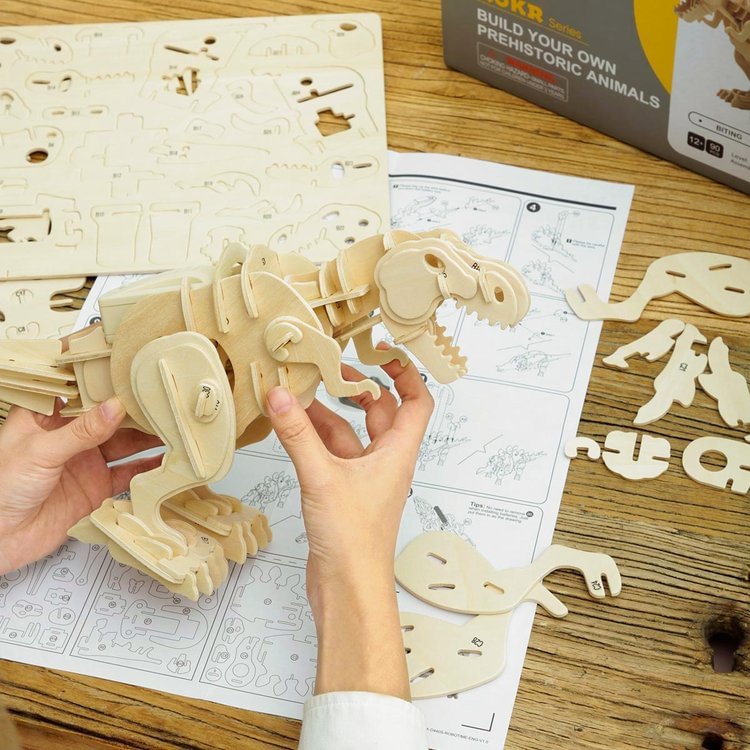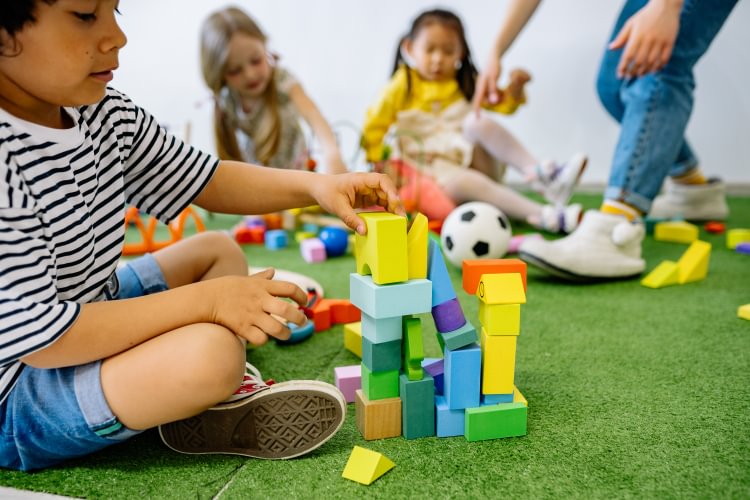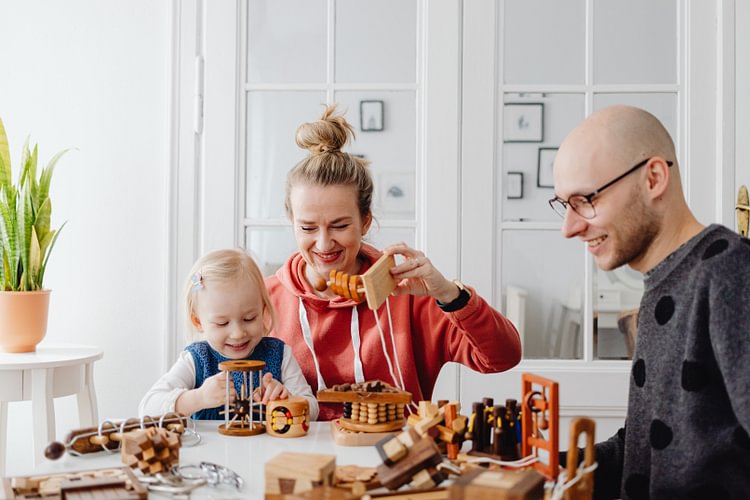Why 3D Wooden Puzzles Are Good for for Your Child's Development
With the precision of a laser beam whose point is finer than a tenth of a millimeter in diameter, each individual piece of a 3D wooden puzzle is cut to an exacting shape and dimension. Each DIY puzzle is an individual work of art - even before it is ever assembled. Its very existence is a marvel of the imagination and a product of scientific achievement. So why are wooden 3D puzzles great educational toys and how will they help develop kids’ skills? Hope you can find answers in this article.

Teaches the Importance of Goal Setting
Even the simplest of puzzles can be a challenge for most children - and may even take several hours to complete. Because of this, when you give a 3D wooden puzzle to any kid, they immediately set a goal in their head that they are going to finish it. Because they want to play with her new toy as soon as possible, they begin to visualize what it will look like once completed. This provides them with the motivation to set a goal in their mind to complete their wooden puzzle. Setting goals is an important skill event every child must learn as young as possible. After all, we can never truly achieve anything or succeed in life unless we have set a goal to meet.
Improves Hand and Eye Coordination
One could argue that a standard two-dimensional puzzle can easily help to improve hand and eye coordination. So naturally, is to be expected that when adding an additional dimension to work on, the development of hand-eye coordination is improved substantially. In order to assemble each design, the child must be able to visualize where, and how each new piece fits with the pieces assembled before it. And with each new piece that is added to the puzzle, that visualization becomes more complex. From start to finish, the demand for hand and eye coordination increases substantially - with the very last piece usually being one of the most difficult pieces to fit together.

Fine Tunes Motor Skills
When our kids are young we focus on helping them to improve basic motor skills such as climbing stairs, jumping, running, crawling, sitting, and even throwing a ball. As they get older, each one of these basic motor skills must be fine-tuned and honed. After all, it requires a lot of patience, focus, and perseverance to put each one of the pieces together on a three-dimensional plane. Their fingers need to work in harmony with their hands, their arms, and their eyes, to ensure that every piece is attached correctly. There will be times, that they may even get frustrated because a part doesn't fit like they think it should. But they have already set that goal to complete the puzzle, and nothing will stop them from accomplishing that task.

Promotes Cooperative Play
Naturally, when they do run into issues during the assembly, they often reach out to their parents, grandparents, or even friends for assistance. Because of this, the assembly of a DIY puzzle promotes cooperative play. Unlike a two-dimensional puzzle which can be assembled even if a piece is missing, or skipped, every piece of this educational toy has to be assembled in order, otherwise that skipped piece will never fit. This forces a child to seek help when they encounter issues.

Enhances Skills for Learning
Two-dimensional puzzles are easy for most kids and only get more difficult as the number of individual pieces increases. At an early age, children learn to start with the corners and add all of the side pieces in or to make a frame, before filling in the middle part. But three-dimensional wooden puzzles have no corners, they have no sides, and they have to be assembled in a specific order. Because of this, their young minds have to learn new skills and adapt to the task, which improves their overall learning experience.

Provides the Satisfaction of Achieving Goals
The end goal for any child is to be able to play with their new toy. It may take them a while to complete the puzzle from start to finish, but in the end, they have the satisfaction of knowing that they were the ones who actually assembled it. There is a certain level of pride that a child feels when they know that, despite the challenges they had met throughout the entire process, they were successful in putting all the pieces together to create something amazing.













